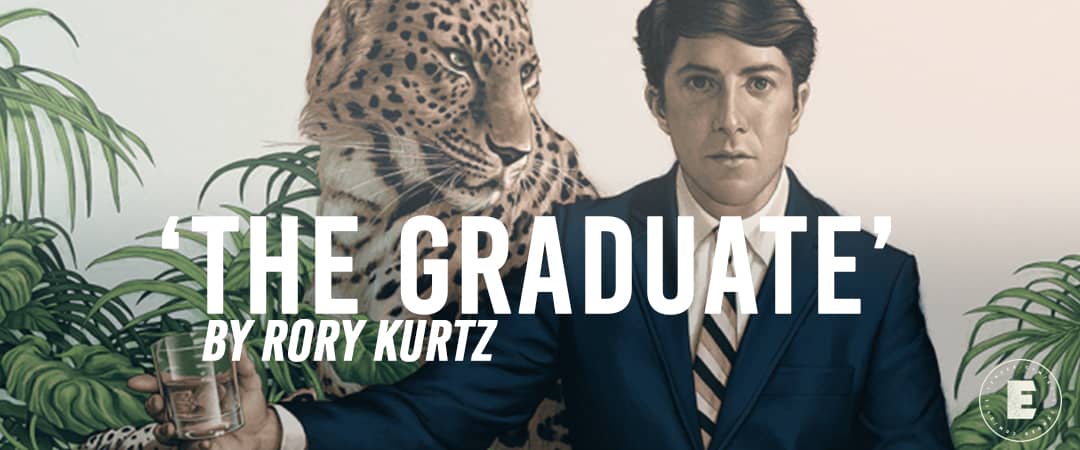
As created by author Charles Webb, Benjamin Braddock is an unlikely protagonist, even in his own life. Under the scrutiny of an author’s pen, Braddock becomes an unwilling anti-hero. His courage is nil and his morality and idealism are ambiguous, or most likely non-existent as his twenty-first birthday looms. Webb’s novel ‘The Graduate‘ finds Braddock days after graduating college, unsure of the correct path in life. His routine of overthinking and non-action breaks and thus begins Braddock’s descent into that of the anti-hero, a byproduct of his youth and the ailment of the educated.
For his illustration of Mike Nichol’s 1967 film adaptation of Webb’s novel, artist Rory Kurtz puts the angst and anxiety of Dustin Hoffman’s Benjamin Braddock on full display. Here is a young man leaving his youth behind while still mentally trapped by it, pulled towards the den of adulthood. The marks of maturity are present. The suit fits and the drink is gripped firmly in hand yet his face tells us otherwise. He feels the threat of an oncoming lifetime of suburban boredom.
The tiger, patient, its true size concealed behind the tropical petal of expensive indoor plants. This is Kurtz’s brilliant depiction of the narrative’s key figure — Mrs. Robinson. Braddock sits in the Robinson’s sun porch, slowly being swallowed by the hunger of Anne Bancroft’s Mrs. Robinson. She is so within him already, his tie takes on her color — he wears her flesh as a flag.
Kurtz’s composition reads like a Caravaggio painting, full-on visual language. The tiger’s gaze hits Braddock’s shadowed face, his glass held like a spear. Kurtz’s only flourish in the painting is his own deft skill at a painted reality, yet this is not a copy of a frame from the film but an artist’s unique perspective on a classic American text. Through Kurtz’s brush, Braddock’s quarter-life dread and naivete are what make him attractive to Mrs. Robinson — he is prey that will not fight back and once taken, will not be missed.

‘The Graduate’ by Rory Kurtz for Mondo
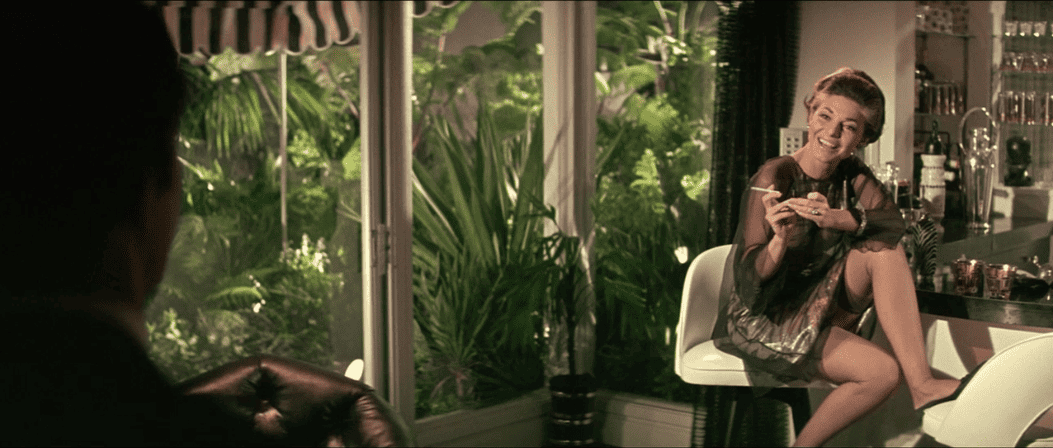
From ‘The Graduate’ directed by Mike Nichols | 1967
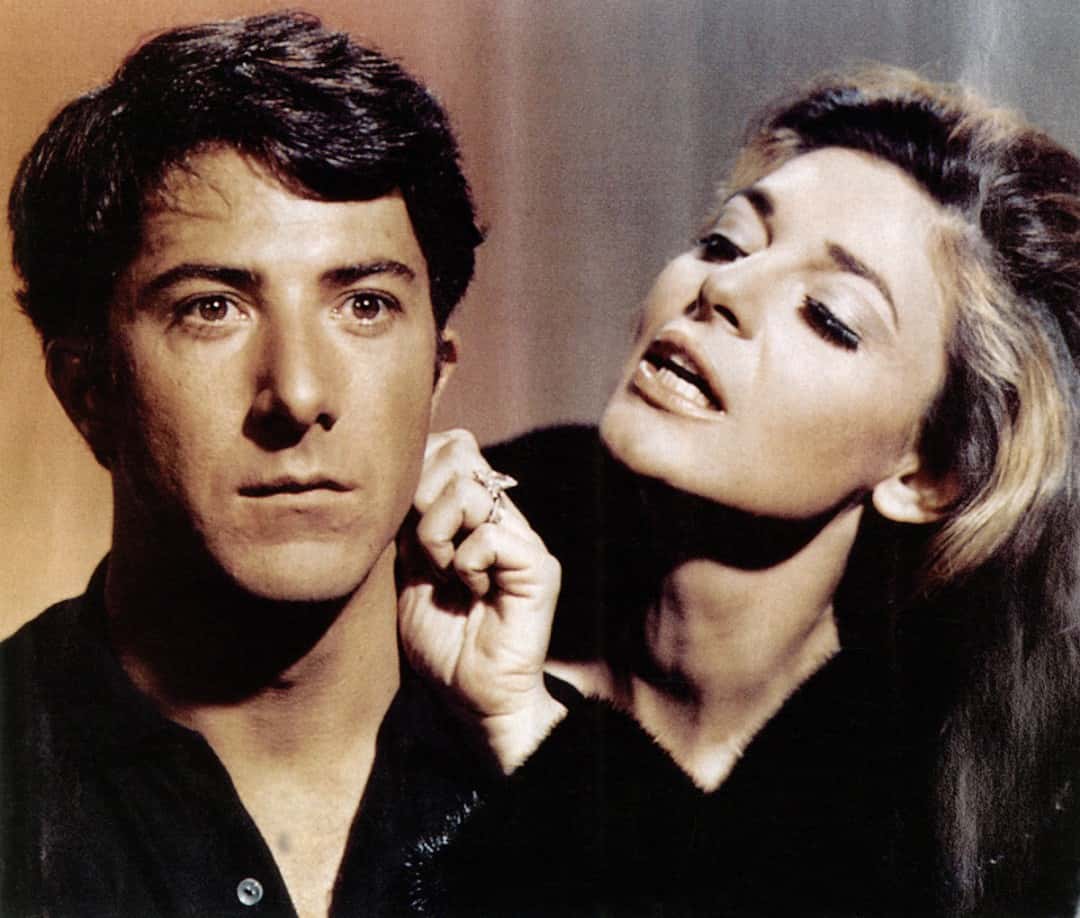
From ‘The Graduate’ directed by Mike Nichols | 1967
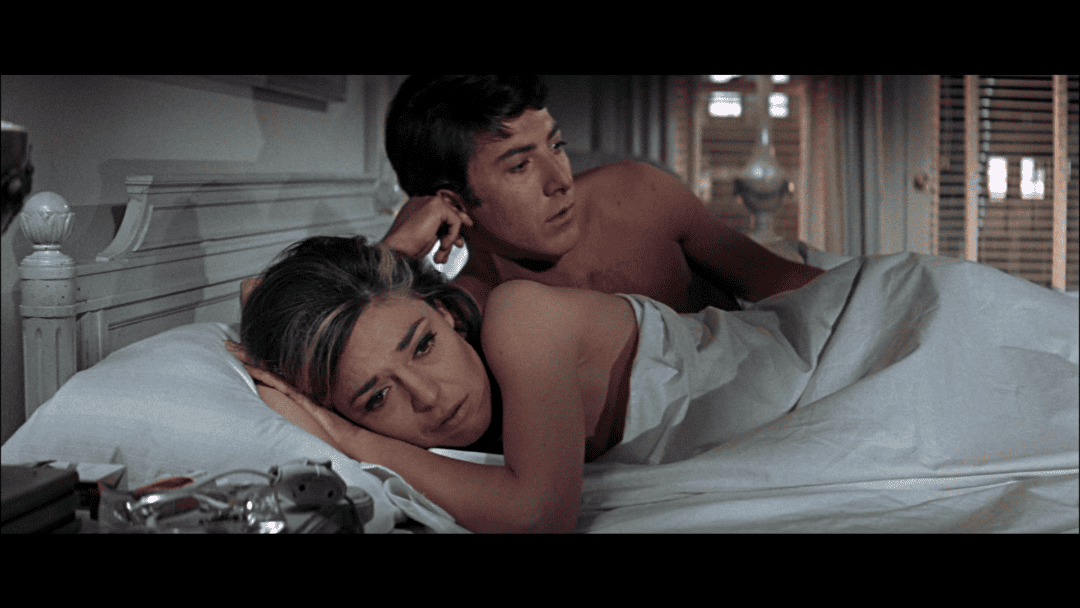
From ‘The Graduate’ directed by Mike Nichols | 1967
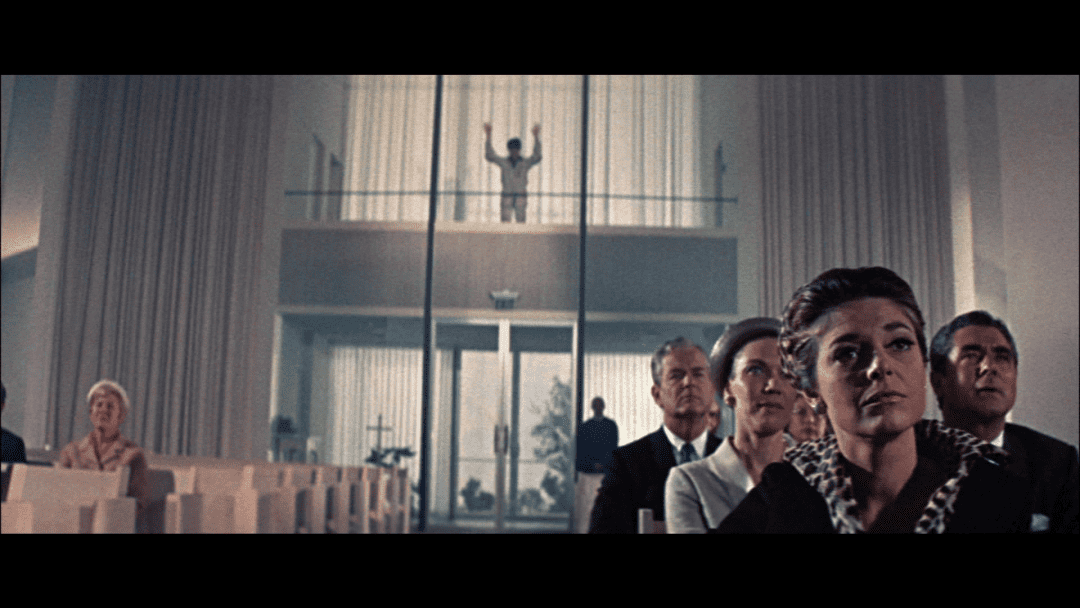
From ‘The Graduate’ directed by Mike Nichols | 1967
